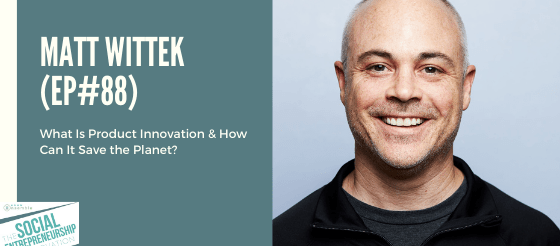What Is Product Innovation & How Is It Reducing Plastic Pollution?

What Is Product Innovation?
Product innovation is the process of creating a new product or redesigning an existing one to meet customer needs, create less waste, or simply improve the functionality of the product. “Product” doesn’t always refer to a consumer good—it can also mean a system or service. A service innovation could be something like Uber’s addition of carpooling or Spotify’s customized, annual listening report. These are typically technology-focused, but they’re still products for purchase.
What Are the Types of Product Innovation?
There are two types of product innovation. A radical product innovation develops a completely new product, while an incremental product innovation redesigns an existing product. In some cases, a product may lie between both types. Steve Jobs developed the new technology and product development process for the very first iPhone, but incremental improvements occur each year when a new iPhone model is released.
Product Innovation Process
For product innovation to be successful and have a competitive advantage in the marketplace, it’s crucial that it’s customer-centric. Without anticipating the needs of the customer and considering their patterns of behavior, the product won’t sell. Whether you’re shooting purely for profitability or you’re aiming for social or environmental impact too, sales are a top priority.
Developing new products or incrementally improving existing ones doesn’t mean you always follow the same map. The innovation management process looks different for everyone. There are a few key areas that must be explored, at the bare minimum, to ensure an adequate entry to market:
Product Innovation Examples
While innovation occurs in every sector from software to cars, social entrepreneurship is firmly rooted in product innovation. Evaluating and redesigning systems is at the core of what social entrepreneurs do. Many
environmentally friendly companies have developed more sustainable alternatives to things like single-use plastic, while social entrepreneurs have completely redesigned systems with unsustainable supply chains. These innovative products are making the world more equitable and more eco-friendly.
Final Straw
 Many people in the environmental movement understand why plastic straws are bad, but they would have struggled to argue against the convenience of a plastic straw during an unexpected midday coffee run.
Many people in the environmental movement understand why plastic straws are bad, but they would have struggled to argue against the convenience of a plastic straw during an unexpected midday coffee run.
That is, until Emma Rose Cohen designed a straw with new, practical features. Final Straws are portable, foldable, and reusable stainless-steel straws for the everyday person on the go. This startup exploded overnight and raised 160x its crowdfunding goal. It’s an incremental innovation that has successfully diverted millions of plastic straws from landfills and our shared waterways.
 Most of our bathrooms are littered with half-full shampoo and conditioner bottles. Since 91% of plastic isn’t actually recycled once it’s left on the curb, the founders of HiBAR searched for a solution that would halt plastic pollution in its tracks. HiBAR didn’t invent the shampoo bar, but they did innovate it. Instead of sacrificing quality (which can be an unwanted side effect of making the switch to solid haircare), they created the first salon-quality plastic-free shampoo and conditioner bars in a unique, handy shape that allow users to lather up and scrub deep. This innovative shape has made the product easier for consumers to use and played an important role in the company’s recognizable branding. Instead of being seen as a sacrifice that only environmentalists make, HiBAR introduced shampoo bars to entirely new markets, scaling its collective environmental impact.
Most of our bathrooms are littered with half-full shampoo and conditioner bottles. Since 91% of plastic isn’t actually recycled once it’s left on the curb, the founders of HiBAR searched for a solution that would halt plastic pollution in its tracks. HiBAR didn’t invent the shampoo bar, but they did innovate it. Instead of sacrificing quality (which can be an unwanted side effect of making the switch to solid haircare), they created the first salon-quality plastic-free shampoo and conditioner bars in a unique, handy shape that allow users to lather up and scrub deep. This innovative shape has made the product easier for consumers to use and played an important role in the company’s recognizable branding. Instead of being seen as a sacrifice that only environmentalists make, HiBAR introduced shampoo bars to entirely new markets, scaling its collective environmental impact.
